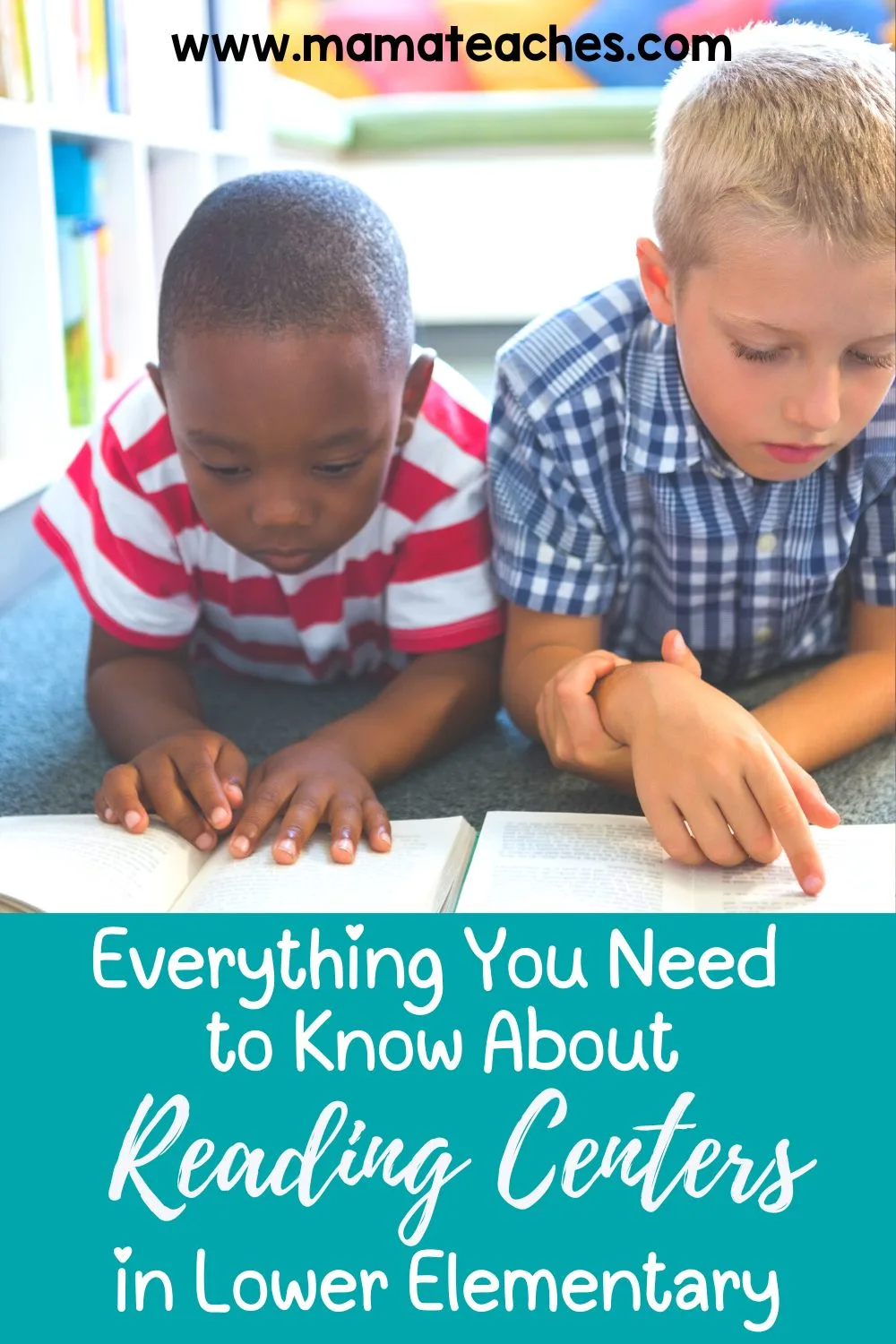Reading centers are key when it comes to successful reading instruction in the classroom. Learn all about reading centers from A to Z!

What Is a Reading Center?
A reading center is a physical location in your classroom with materials students need to complete a reading (and sometimes writing) activity.
Students can complete reading centers independently, with a partner, or in a small group.
Your class can have one or more reading centers. Typically, you start with one center and move up to four to six as your students learn the ropes.
The Benefits of Reading Centers
Reading centers benefit both you and the students.
Each student gets a chance to engage in targeted practice of reading skills. You can tailor the centers to meet the needs of each student.
While your students are dispersed among reading centers, you can work with a small group of students for intensive reading instruction.
This is the perfect time to do guided reading with a small group of students.

This article contains affiliate links to things that you might like.
The Five Types of Reading Centers
Reading centers typically fall into six types. Each type can have its own set of rotating activities.
Read to Yourself Center
This is a classic reading center, and the simplest to set up.
You can assign books to students, or let them choose their own from your classroom library.
Early readers will need to read aloud to themselves (quietly), but more experienced readers can read silently.
Even if a child is just “reading the pictures,” he or she can read independently.
Word Practice Center
This reading center focuses on sight words, spelling, and vocabulary.
You can provide a student-specific list of sight words to practice (based on your individual assessments), or you can take a more general approach.
You can use various letter manipulatives (like letter magnets, tiles, clay, Wikki-Stix, or beads) to form words on the list.
Younger students can use paint dotters and letter worksheets.
Once your students are writing, they can copy the words they form.
Older students can write the word in a sentence to show its meaning.
Ear Reading Center
There are many benefits to listening to a book and following along (also called ear reading).
If your school has access to the digital reading platform Epic!, you are in luck.
(You are really hitting the jackpot if you have classroom tablets, but computers will work too.)
You can also use regular audiobooks for this station, but optimally kids can look and listen to the text.

Writing Center
In the writing center, students complete simple writing activities from the prompts you provide.
These prompts may include:
- Roll and Write
- Writing from Pictures
- Seasonal Prompts like Spring and Summer
- Story Cubes
- Writing Prompt BINGO
Kindergartners are brand new to writing, so you will need simple writing prompts for their writing center.
Fluency Center
Poems are the perfect way to practice fluency, as their emphasis on rhythm and rhyme takes fluency to read.
In the fluency center, students will read a poem several times over. If you have a small recorder, they can record their best version.
You can also stock the fluency center with lists of sight words, word families, phrases, and sentences with punctuation.
Make sure you purchase stopwatches! Kids love to time themselves or one another as they read the lists.
Buddy Reading
In the buddy reading center, students practice reading aloud to someone else.
They can partner with another student or choose a soft stuffed animal.
They can choose a book together and alternate reading pages to one another, or they can read their own books to one another.
Even early readers can practice buddy reading by “reading the pictures.”

How to Introduce Reading Centers
When you are starting your class with reading centers, you will want to introduce them one by one.
You can ask the class, “What do you think a reading center is? What is its purpose?”
Create an anchor chart together of appropriate behavior at a reading center.
Then have students demonstrate the right and wrong ways to behave in a reading center.
Generally, it works well to start with the “Read to Yourself Center.”
You can make this especially appealing with a cozy reading nook or carpet.
Reading Centers from A to Z
Reading centers allow students to work on key reading and writing skills.
They also free up time for you to work with small groups of students.
Though they take some prep work from you, most of these centers can be used all year long.
Incorporate them into your classroom to advance your students’ reading skills.
